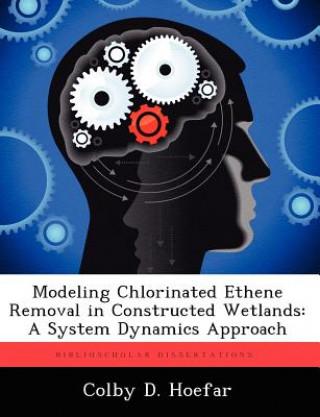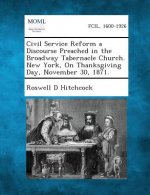
Code: 08141738
Modeling Chlorinated Ethene Removal in Constructed Wetlands
by Colby D Hoefar
The purpose of this study is to gain understanding of the dynamics of the processes that degrade Perchloroethene (PCE) to ethylene, or carbon dioxide (CO2), within the confines of a constructed wetland. A system dynamics approach ... more
- Language:
 English
English - Binding: Paperback
- Number of pages: 120
Publisher: Biblioscholar, 2012
- More about this

You might also like
-

Scenography Expanded
157.85 € -

Su Ano de Cambiar
17 € -18 % -

Web-Based and Blended Educational Tools and Innovations
203.26 € -

Magyar Tudomanyos Akademia Tamogatasavai Kiadja a Magyar Nemzeti Muzeum, Volume 5
43.68 € -

Macroeconomics and the History of Economic Thought
211.21 € -

Contractors Exposed
18.41 € -

Other Side of Midnight - the Fulfillment
17.61 € -

Modellazione e dinamica del veicolo da competizione
77.41 € -

Managing Inclusive Education
84.36 € -

Magic for Marigold
25.56 € -

Fine, But Hardly Dandy
32.11 € -

Facing The Enemy - Inner Me
13.68 € -

Arabian Nights Entertainments
33.62 € -

Have a Nice Day
31.10 € -

Civil Service Reform a Discourse Preached in the Broadway Tabernacle Church. New York, on Thanksgiving Day, November 30, 1871.
17.31 € -

Proposed Mathematical Model for Predicting Military Electronic Equipment Component Failure Rates and Isolating Underlying Failure Causes
59.79 € -

Manorbeer Castle, Co. Pembroke, and Its Early Owners. from 11th and 12th Centuries
15.19 € -19 % -

Published by the Authority of the Hull Assistant Drapers' Association. the Late-Hour System. Proceedings at a Public Meeting of the Hull Assistant Dra
13.68 € -18 % -

Lieutenant Mary. a Novel. Vol. II.
25.46 € -19 % -

Abendmahl mit Kindern. Praktisch-theologische UEberlegungen
52.04 € -7 % -

Biography of a Black Christian Family
16.70 € -2 %
Give this book as a present today
- Order book and choose Gift Order.
- We will send you book gift voucher at once. You can give it out to anyone.
- Book will be send to donee, nothing more to care about.
More about Modeling Chlorinated Ethene Removal in Constructed Wetlands
You get 150 loyalty points
 Book synopsis
Book synopsis
The purpose of this study is to gain understanding of the dynamics of the processes that degrade Perchloroethene (PCE) to ethylene, or carbon dioxide (CO2), within the confines of a constructed wetland. A system dynamics approach will be used. This model is focused on identifying and optimizing the naturally occurring processes in stratified wetland sediment that reduce mass, toxicity, mobility, volume or concentration of contaminants in groundwater. Contaminant fate and transport within a wetland system is an extremely complex and dynamic process. The entities and mechanisms that drive wetland behavior are dynamic. The system dynamics process is favored over other modeling processes for this study as it develops insight into the behavior of the system as a whole versus one influential mechanism in the system. Confidence in the model was built through verification and testing. Reasonable behavior resulted from a reasonable range of parameter values. The structure of the model represents the mechanisms and their interactions of an actual wetland system. This study provides a fundamental understanding of contaminant fate and transport in a constructed wetland and gives some insight for implementation. Testing identified specific parameters of typical wetland plant species, which could be optimized to have the most effect on contaminant fate. These parameters were the radius of aerobic influence and the number of roots per square meter. A remediation manager can use this model to explore system behavior by controlling or optimizing specific parameters to better manage contaminant fate and transport in a constructed wetland, saving time and resources.
 Book details
Book details
Book category Books in English Society & social sciences Education
59.79 €
- Full title: Modeling Chlorinated Ethene Removal in Constructed Wetlands
- Subtitle: A System Dynamics Approach
- Author: Colby D Hoefar
- Language:
 English
English - Binding: Paperback
- Number of pages: 120
- EAN: 9781249584476
- ISBN: 9781249584476
- ID: 08141738
- Publisher: Biblioscholar
- Weight: 227 g
- Dimensions: 246 × 189 × 6 mm
- Date of publishing: 03. October 2012
Trending among others
-

Cambridge IGCSE (R) & O Level Complete Physics: Student Book Fourth Edition
41.97 € -

Cambridge IGCSE (R) & O Level Complete Biology: Student Book Fourth Edition
41.97 € -

Cambridge IGCSE (R) & O Level Complete Chemistry: Student Book Fourth Edition
50.93 € -

Oxford IB Diploma Programme: IB Economics Course Book
62.31 € -

Oxford International Primary Science Second Edition: Workbook 4
14.99 € -

Oxford IB Study Guides: Economics for the IB Diploma
47.71 € -

Business Partner B1 Workbook
17.71 € -7 % -

Business Partner B2 Workbook
16.90 € -6 % -

AQA GCSE German Foundation Practice Papers
15.29 € -

CompTIA Security+ Review Guide - Exam SY0-601
24.76 € -24 % -

AQA French A Level Year 1 and AS
50.33 € -

Cambridge IGCSE (R) & O Level Complete Biology: Print and Enhanced Online Student Book Pack Fourth Edition
61.10 € -

Oxford IB Diploma Programme: IB Theory of Knowledge Course Book
57.98 € -

geog.2 Workbook
11.47 € -6 % -

Teach Reading With Orton-gillingham
18.82 € -10 % -

KS3 Maths 10-Minute Weekly Workouts - Year 7
8.04 € -8 % -

Blue Book of Grammar and Punctuation: An Easy- to-Use Guide with Clear Rules, Real-World Examples , and Reproducible Quizzes, Twelfth Edition
15.09 € -28 % -

Business Partner B1+ Workbook
16.90 € -3 % -

Powerful Teaching: Unleash the Science of Learning
26.17 € -26 % -

Embodied Teen
21.64 € -16 % -

(ISC) SSCP SG & SSCP Practice Test Kit, 3e
65.13 € -27 % -

Growth Mindset Classroom-ready Resource Book
16.20 € -28 % -

AQA A Level Biology Revision Guide
25.56 € -5 % -

UKCAT For Dummies
23.15 € -28 % -

Oxford International Primary Maths Second Edition: Practice Book 1
12.17 € -

Oxford International Primary Science Second Edition: Student Book 1
26.77 € -

Donny's Unauthorized Technical Guide to Harley Davidson 1936 to Present
47.91 € -16 % -

OET Speaking for Nurses Book 2
11.57 € -2 % -

Oxford International Primary Maths Second Edition: Practice Book 2
12.17 € -

Cambridge IGCSE (R) & O Level Complete Physics: Print and Enhanced Online Student Book Pack Fourth Edition
62.91 € -

Edexcel International GCSE Chemistry Student Book Second Edition
31.60 € -14 % -

OET Speaking For Nurses Book 1
12.78 € -

Walk Your Talk; Tools and Theories To Share Nonviolent Communication
29.29 € -

Oxford International Primary Maths Second Edition: Practice Book 3
13.58 € -

Social Skills Activities for Secondary Students wi th Special Needs, Third Edition
26.37 € -21 % -

geog.1 5th edition Workbook Answer Book
70.36 € -

New KS2 English Year 5 Foundation Grammar, Punctuation & Spelling Targeted Question Book w/Answers
8.95 € -5 % -

New KS2 English Year 4 Foundation Grammar, Punctuation & Spelling Targeted Question Book w/Answers
8.95 € -5 % -

Cambridge IGCSE (R) & O Level Complete Chemistry: Print and Enhanced Online Student Book Pack Fourth Edition
62.91 € -

Making Escape Rooms for Educational Purposes
18.72 € -

Oxford International Primary Maths Second Edition: Practice Book 5
16.10 € -

Oxford IB Diploma Programme: Oxford IB Diploma Programme: IB Mathematics: applications and interpretation Standard Level Enhanced Online Course Book
110.23 € -

240 Vocabulary Words Kids Need to Know: Grade 3
11.37 € -19 % -

Education in the New Age
12.88 € -

OET Preparation
9.65 € -

Speed and Accuracy: Multiplication
8.65 € -

ESL/ELL Teacher's Survival Guide: Ready-to-Use Strategies, Tools, and Activities for Teaching En glish Language Learners of All Levels, 2nd Edition
29.69 € -21 % -

KS3 Maths 10-Minute Weekly Workouts - Year 8
8.04 € -8 % -

Speed and Accuracy: Division
8.65 €
Collection points Bratislava a 2642 dalších
Copyright ©2008-24 najlacnejsie-knihy.sk All rights reservedPrivacyCookies



 15549 collection points
15549 collection points Delivery 2.99 €
Delivery 2.99 € 02/210 210 99 (8-15.30h)
02/210 210 99 (8-15.30h)